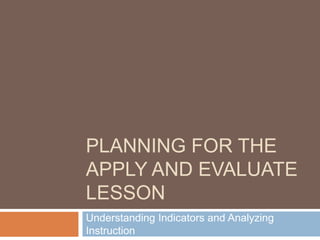The document provides guidance for student teachers on planning a lesson to be evaluated based on the TAP rubric indicators of Presenting Instructional Content and Thinking. It reviews the descriptors for each indicator and discusses key elements like modeling, using visuals, internal summaries, and teaching different types of thinking. The document emphasizes modeling expectations, engaging students in generating ideas and multiple perspectives, and using research. It stresses including these elements in the lesson plan to meet the requirements of the evaluation assignment.



























